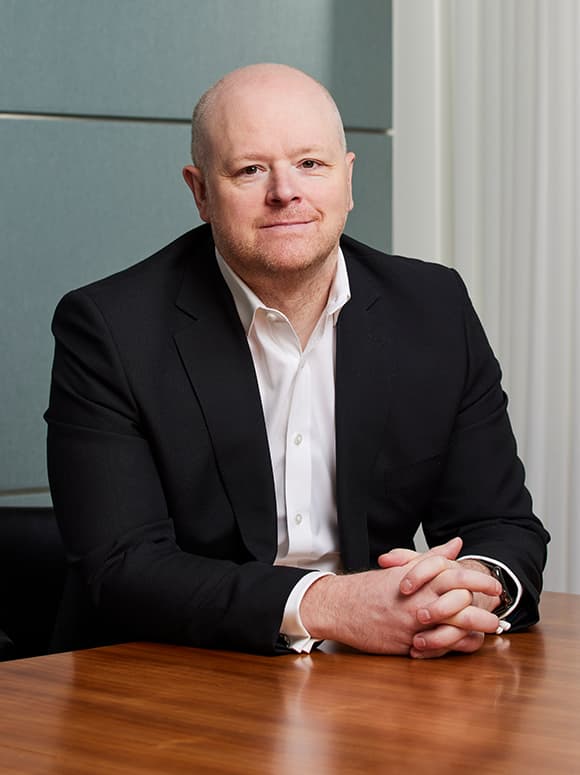Continuing bank retrenchment and an underserved lower mid-market have tilted the playing field in favour of a growth-orientated approach to opportunistic credit, says Ian Jackson, head of Permira Strategic Opportunities.
What do we mean by opportunistic credit? How do you define it as a strategy?
The definition of opportunistic credit has evolved over time. The way I describe it is the financing of companies unable to access traditional forms of capital for any number of reasons. That could be due to a dislocation in credit markets, or it could simply be that the individual companies themselves are mispriced or misunderstood.
Typically, these deals tend to require bespoke solutions that can be anywhere across the capital structure. It could involve anything from senior debt to second-lien mezzanine, or even preferred
equity in some instances. Opportunistic credit is often not about true distressed investing, but equally, given the greater complexity, it is not direct lending either. There is a whole range of different circumstances and therefore opportunities that fall somewhere between the two.
We pride ourselves on being providers of what we see as ‘solutions-based capital’ – lending to solve challenges, or supporting growth initiatives for the
borrower, in a way that works for both parties.
What is your approach to origination in today’s market and where are you finding that most opportunities are coming from?
It is incredibly helpful to be part of a broader organisation like Permira, particularly given the part of the market where our team is focused – the lower mid-market in Europe. Having an established credit business focused on Europe and a private equity business that is global in nature means we tend to find that a significant number of opportunities come to us from those parts of the platform. And that’s before you even start to consider the relationships that our own team can leverage.
At the moment, I would say that around 50 percent of the dealflow we see comes directly from existing relationships, and the remaining 50 percent comes from other parts of the firm. This is something that I think enables us to stand out and be highly selective in what we pursue.
What are the typical use cases for the capital you provide and has that surprised you?
It has definitely surprised me. If you had asked me 18 months ago where we would be spending our time and allocating our capital in the opportunistic credit space, my answer would have been very different to the reality we are seeing today.
Given rising interest rates and widespread uncertainty throughout the second half of 2022, I would have anticipated that we would be focusing our attention on more stressed or even distressed transactions. It would have been reasonable to expect that companies would be struggling with a lack of liquidity or possibly even looking to refinance their capital structures, given pressures on cashflows. But that just isn’t what we have been seeing.
It takes time for interest rate rises to flow through to borrowers, and unless businesses have really needed to refinance, they haven’t. We have seen an increase in A&Es, which – unless we see a change in the economic environment – will only ever be a short-term fix, because they generally don’t address underlying issues. What we have seen instead, however, which has been a pleasant surprise, is more situations that are growth-orientated in nature, which also fits with the broader Permira platform.
To be clear, I am not talking about tech companies that are burning huge sums of cash, where you have to take a view on a story that will pan out over the next three to five years. I am talking about businesses that are generating cash today but could grow further if they had additional capital behind them.
These are the kinds of deals where we have been focusing most of our time over the past 12-18 months, but all that could change very quickly. It could well be that we start to see greater volumes of stressed situations in the market going forward, and that’s where having a solutions-based strategy leaves us well placed, as we have the flexibility and skills to be active in any market environment
What kind of interaction do you have with your private equity colleagues at the firm?
As I mentioned, our private equity colleagues are extremely helpful when it comes to originating deals, but we also leverage their deep thematic understanding to better inform and expedite our own underwriting process, and proactively seek out opportunities conforming to those themes. Given the deep sector expertise and pattern recognition that they have built over nearly four decades, we see this as a significant differentiator.
We are able to tap the firm’s global network to gain insight, whether that is through senior advisers, or even the management teams of the private equity funds’ portfolio companies. We are only ever one or two phone calls away from proprietary sector expertise, enabling us to make informed decisions in a timely manner.
Having access to this expertise enables us to be more of a value-add provider of capital. For example, we have recently come across one particular business that is not only looking for capital, but also for help in developing its brand. In that instance, we are not just talking about a funding solution but rather a holistic solution that involves the capital required to grow, and also some strategic direction.
How do the different legal and bankruptcy regimes around the world compare and where do you focus your attentions as a result?
Our focus is predominantly on Europe, given Permira Credit's current footprint, although we have the ability to invest outside Europe. The Chapter 11 regime in the US is well understood and is fundamentally the same whether you are lending on the West Coast or East Coast.
In contrast, Europe offers a more varied landscape, a patchwork quilt of laws and regulations. As a result, there are several potential pitfalls involved in European lending, particularly around ensuring that you have sufficient creditor rights to lean on.
We have been operating in Europe for a long time and so we have developed a playbook that works. But I do think the complexities of the market can create unexpected challenges for newer entrants.
In general, we find that markets such as the UK and Northern Europe lend themselves better to this strategy than other regions.
However, that is not to say that we wouldn’t lend in Italy, for example. In fact, we have done just that. But we structure those deals in such a way that if we do have to enforce, we enforce outside the country. We adhere to our own rules very strictly in that regard, and however attractive an opportunity appears, if it doesn’t work for us structurally, we will pass.
Do you see greater value in the primary market or secondaries market today?
We are definitely seeing better value in the primary market today. There is too much capital chasing too few deals in the secondaries market. There has been a lack of new deals in the broadly syndicated loan market, meaning good companies are trading at much tighter spreads than is potentially warranted, just because capital needs to be put to work. In fact, depending on the opportunity, we are seeing spreads that are at least 500 basis points better off in the primary market than in the secondaries market today.
Away from just pure pricing, we would also argue that documentation in the broadly syndicated loan market lacks the creditor protections we can and have inserted into our own documents in the primary space.
How do you expect the opportunistic credit market to evolve in 2024 and beyond?
I certainly think this market is here to stay – there has been a secular shift in the way banks are lending. Bank retrenchment has driven the proliferation of direct lending funds that we have observed over the past 15 years, and I think we will now see something similar in the opportunistic space.
The deals that we focus on take a bit more time. They are less transactional and more cerebral in nature. They involve a holistic approach. That type of opportunity is increasingly falling outside the parameters of what bank and direct lenders are comfortable with, and so we see a strong future for the strategy going forward.








